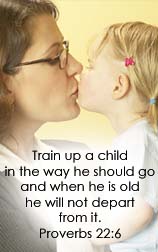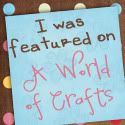So, what exactly is Getting Started with French?
This is a beginning French book that is suitable for homeschoolers or self-taught students of any age. It is written by William E. Linney and Brandon Simpson. Mr. Linney previously released Getting Started with Latin and Getting Started with Spanish, and sometime in the future will be releasing Getting Started with Russian.
Getting Started with French is 281 pages long, with 172 lessons. Prior to the lessons there is a short preface and a four page section titled, "How To Use This Book." It is highly recommended to read the this section. The bulk of the book is devoted to the lessons. At the back of the book you will find a page titled, "General Advice" which brings the lessons to a conclusion and gives suggestions on how to move ahead in your study of French. Then there is an Answer Key, a Pronunciation Guide, a Glossary, and a Subject Index. Sprinkled throughout the book are "Expressions Francaises" where we get a little glimpse into the meaning of common expressions that have their roots in French, such as deja vu and bon appetit.
The wonderful aspect about this book is that you do NOT need to purchase anything else. Well, it is good to have a pen/pencil and a notebook if you would like to have your child write down the exercises, but I'm assuming most people have those on hand anyway. You don't have to buy any CDs or DVDs. You don't have to have a different workbook for each child. And, it's not like just purchasing a workbook or flashcards and trying to teach your child a foreign language. I mean, I've looked at workbooks and flashcards, and have scratched my head wondering how in the world I am supposed to teach it, mainly because I have no clue how to pronounce the words. Silly foreign languages with their different sounds for the letters!
Getting Started with French eliminates these obstacles and added expenses. Not only is this book self-contained (meaning you don't need to buy extra materials), but it can be used by multiple children because the exercises can be done orally or written down in a notebook. The book also explains how to pronounce new sounds in the lessons. Not only that, access to pronunciation recordings is free on the website. You get to hear a native French speaker pronounce the words! Also included on the Free Downloads page are the authors' commentary recordings where they give more instruction on each lesson.
The book starts out really slowly and builds upon the previous lessons as it progresses. Before any words are taught, the student will have a few lessons in pronunciation and grammar. A couple of French words are introduced, but only as pronunciation examples. It is also explained that nouns have a gender, which is a new concept for beginning learners of French (though we have actually touched on this a bit in the past). Finally, in lesson five, we learn our first French word, the word for a/an - un. Just one word. And that is how the pattern of the book continues. Only one word (or occasionally 2 or 3 related words) is taught at a time. Sometimes a lesson won't introduce any new words, but will introduce a new concept. In fact, you might even have a quick lesson in English grammar to help refresh young minds about the upcoming concept.
Here, let's take a look an an early lesson.
The New Word is always at the top of the page, and is in bold font.
The Meaning is below the word in italic font.
Pronunciation Tips and Grammatical Information are shared.
At the bottom of the page you will find exercises. All of the words in bold font will be available to hear in that lesson's audio pronunciation.
Occasionally, there are charts that help illustrate the grammar that is being learned as well.
When we first started, I didn't worry about Tabitha writing the lessons in her notebook as there weren't many different words to know. So, we just listened to the recordings while sitting by the computer. We listen to the native speaker say one word or phrase, then I pause it while we both practice saying it. I then have Tabitha translate it into English.
As the lessons got a bit longer, I decided I also wanted her to have that extra sensory experience of writing the words. So, I had her start writing the exercises in her notebook.
Now, you will notice that the words we are learning so far only make it possible to write single words and phrases. Starting in lesson 39, students will start being able to write sentences, first with bonjour, as they learn to say such things as "Bonjour, mon ami," and shortly thereafter verbs begin to be introduced, such as "je suis" meaning, "I am," so we can say"Je suis ta soeur," or "I am your sister. As the student works their way through the book, they will really learn to read, speak, and understand French words that they may actually be able to use.
I think this is a great beginning French course. I love that it is so flexible. The lessons progress at a good pace, allowing the student to have ample time for practice, in order to master each new word or concept. I know we spent a little extra time trying to pronounce that gurgling r sound. However, some of the lessons are short enough, that it is easy enough to move ahead to the next lesson. I think it is great that we don't need a teacher, and can teach ourselves French with this book.
If you are looking for an inexpensive, beginning, French course, I think this is a wonderful way to go. I would recommend that a student have at least a simple understanding of grammar in order to understand how phrases and sentences are put together. Though younger children can still listen in and learn the vocabulary. They will also start to get a feel for the grammar as they listen to older siblings and parents.
I think this is a great beginning French course. I love that it is so flexible. The lessons progress at a good pace, allowing the student to have ample time for practice, in order to master each new word or concept. I know we spent a little extra time trying to pronounce that gurgling r sound. However, some of the lessons are short enough, that it is easy enough to move ahead to the next lesson. I think it is great that we don't need a teacher, and can teach ourselves French with this book.
If you are looking for an inexpensive, beginning, French course, I think this is a wonderful way to go. I would recommend that a student have at least a simple understanding of grammar in order to understand how phrases and sentences are put together. Though younger children can still listen in and learn the vocabulary. They will also start to get a feel for the grammar as they listen to older siblings and parents.
You can find Armfield Academic Press on Facebook.
Don't forget to click on the banner below to see what my fellow Crew Mates are saying about Getting Started with French.




































![[PREMIO2009.png]](https://blogger.googleusercontent.com/img/b/R29vZ2xl/AVvXsEjXD_Gx-wZ9EM5hXKrEYLksEBkYfRQtmb8VDVTDG_yyLggQoFIstZsh4zszdG20KqErZicRzEhiNYLty7j3IMXJYsABqkXjr8pp-ncj71xCbpxlXGbGpZq2fTuDQqq1RMKV4DPcDBnBViA/s1600/PREMIO2009.png)




No comments:
Post a Comment
Thank you for visiting my blog today. I love to read your comments, so please leave me one if you have the time.
Blessings